C. Lee McKenzie's Blog, page 14
December 1, 2021
A First Wednesday Thought: Life Is Sufficiency
I visited One Woman’s Quest last month. I’m not sure how I found the site, but since I wrote Shattered, I’m navigating to a lot of different places in this internet sea that I might not have otherwise. I’m so glad I found it because this poem touched me deeply, and I knew I wanted to share it with my readers. V.J. graciously gave me permission to re-post it here. Thank you, V.J. Your thoughts are couched in such beautiful language.
SufficiencyDisability corners me
twixt two directions –
the hurried rush
of ambition’s call
and the gentle nudge
of wisdom settling
Confined to four rooms
I am distanced from –
invisible to –
the weekend warriors
whose self-satisfied grimaces
race by my window
I remember that push –
not enough hours to the day
not enough money to succeed
never thin enough, fit enough
always grasping for more…
Legless and exhausted,
I am disqualified
from competing,
immersed in retrospection,
luxuriating in perspective –
I’ve always had, indeed,
continue to have
everything I need:
a home I can navigate,
the endless beauty of nature
and the care of loved ones.
Abundance, I’ve discovered, is attitude:
recognition and acceptance
that life is sufficiency
by
“I’ve derived this poem from a post by the same name, dated October 2014.
At the time, I was five months into the losses that were Myalgic Encephalomyelitis…”
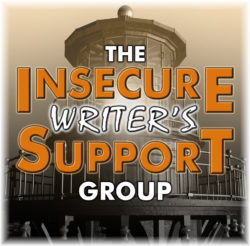 Join Us Now
Join Us NowAnd now for our monthly question. Remember, the question is optional!
In your writing, what stresses you the most? What delights you?
The awesome co-hosts for the December 1 posting of the IWSG are PJ Colando,Diane Burton,Louise – Fundy Blue,Natalie Aguirre, and Jacqui Murray!
Since I’m going through the most stressful part of this writing business right now, this question is easy to answer. Releasing a book into the world shoots my stress level to “explosive”. Picture that emoji of the guy with the top of his head erupting like a volcano, and you get some of how I feel. The publicity deadlines, the obligation to winners of prizes, the delays in getting books for special promotions, the uncertainty of public response. All of these combine to make me vow never to do it again. So far this has been a vow I haven’t kept, and I’ve repeated it 10 times with 10 books. I always think, “This time will be easier because I’ve had practice.” Ha! That is not the case.
Maybe I don’t stop because I know I’m always ready to enter the delightful period, and that will diminish the stress, and I’ll be sane again. When I’m at the re-writing stage of a book, I’m in heaven. The characters are there to “play” with, the plot is laid out to twist for more interest or smooth out for more plausibility, the narrative and description are ready for those final touches. Ahh. Now that is heaven.
Shattered’s Blog Tour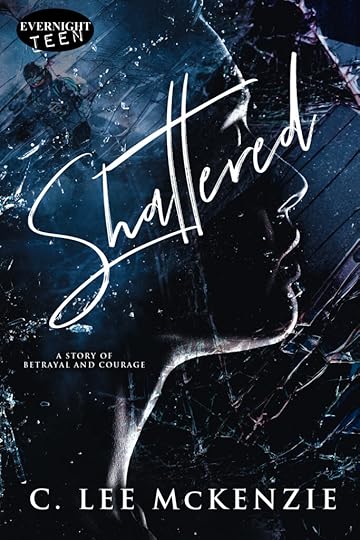
Shattered is featured in a few blogs from Nov 29 to Dec 3. If you have a moment, I hope you’ll stop by some of these great sites. I so appreciate bloggers who help get the word out about books, and I like to encourage them for their efforts.
November 29:
1: Momma Says: To Read or Not to Read
2: Write. Read. Live.
3: Mythical Books
4: Gold Dust Editing & Book Reviews
5: Literary Gold
6: The Avid Reader
7: Straight from the Library
November 30:
1: Aubrey Wynne: Timeless Love
2: Long and Short Reviews
3: Readers Roost
4: Splashes of Joy
5: Kit ‘N Kabookle
6: The Pen and Muse Book Reviews
7: Westveil Publishing
December 1:
1:Books in the Hall
2: Fabulous and Brunette
3: https://andisyoungadult.blogspot.com
4: Stormy Nights Reviewing & Bloggin’
5: Sapphyria’s Books
6: Triquetra Reviews
7: Author C.A.Milson
December 2:
1: Eye-Rolling Demigod’s Book Blog
2: Welcome to My World of Dreams
3: The Faerie Review
4: Don’t Judge, Read
5: Coffee and Wander Book Reviews
6: Jazzy Book Reviews
7: Let me tell you a story
December 3:
1: Locks, Hooks and Books
2: Novels Alive
3: Hope. Dreams. Life… Love
4: Sandra’s Book Club
5: Girl with Pen
6: It’s Raining Books
Quote of the Week: “Sometimes your destiny is wrapped up in a veil of fear to check if you really have the courage to face it.” Marcus Hades, Poet
November 24, 2021
Meet Author, Neil McKee
I’m off to celebrate Thanksgiving and send everyone my very best for a wonderful holiday. As a special treat today, I’m welcoming Neill McKee to my blog to introduce his new book. Thanks for joining me today, Neil.
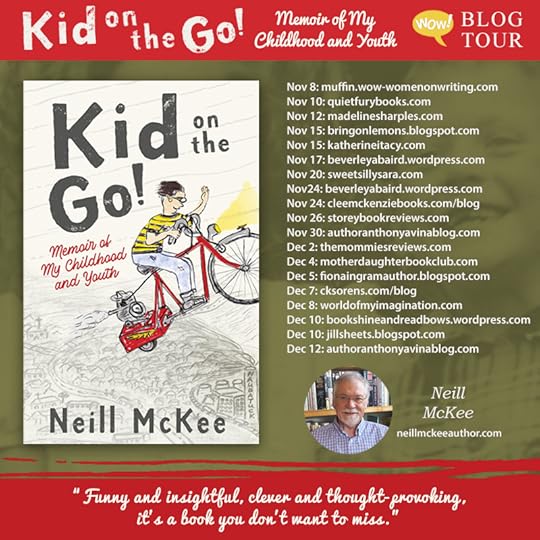
1. What other authors are you friends with? Have they helped you become a better writer? If yes, has it been their support or feedback or something else that’s been so valuable?
I got into creative writing late in the game, after a long career in filmmaking, media production, and writing in international development. The first author who helped me was Diane Thiel, a professor in the English Department at the University of New Mexico. She allowed me to join a couple of her graduate seminars. I loved her style of teaching and the feedback I received from her and other students. I have also shared my work with Gayle Lauradunn as it develops, and she gives me good feedback, chapter-by-chapter. In return, I give her feedback on what she is writing. Then, when I am ready, my literary editor, Pamela Yenser weighs in, and she offers many great ideas, some restructuring, shortening or lengthening. She also does a first pass at copy editing. These women are all recognized poets and authors in their own right. After reviews by about 10 readers, both male and female, I send my manuscripts back to Pamela for a second pass. I’d say my manuscripts go through at least 50 revisions before I send them to my proofreader—also a woman.
2. What do you hope readers will take away from Kid on the Go! Memoir of My Childhood and Youth?
I hope that readers take away that it is possible to write an interesting childhood and/or youth memoir even if you had loving parents, supportive siblings, and haven’t suffered from abuse, neglect, discrimination, war, terror, etc. So many top-selling memoirs are written by people who have beaten all odds and risen to a successful life, accomplishing great things. But many more of us have stories worth telling if we dig into our memories and let our creative juices flow. It does help to have an antagonist to fight against. In my case, it was my Canadian hometown’s polluted environment in which I lived from 1945 to 1965—a chemical factory that produced insecticides and herbicides, the latter employed in the making Agent Orange for the American Army’s use in Vietnam. Although few people in town knew about that ugly fact at the time, we all knew the place often stank from by-products of that factory, as well as a fertilizer plant, a
foundry, and more—all proud signs of the post-war boom. The pollution provided conflict in my stories to use the theme of “escape” by just about any means possible—finding various routes out of town, fishing, hunting, building or renovating “escape vehicles,” working on my dad’s farm in the summer, dreaming about girls and sex instead of paying attention in school, confronting authority in my teenage “rock n’ roll” years, being introduced to philosophy and Zen Buddhism in senior high school, taking “existential leaps” out of airplanes, going out West to Calgary, Alberta for clear air, big blue skies, and mountains to complete my B.A., and finally leaving Canada in 1968 to be a volunteer teacher in Sabah, Malaysia, on the verdant Island of Borneo in Southeast Asia.
3. What was the biggest culture shock you experienced as a young man in Borneo?
Kid on the Go! is a stand-alone prequel to my award-winning travel memoir Finding Myself in Borneo: Sojourns in Sabah. You’ll have to read that book to find out about all my culture shock experiences. But let me say that my biggest culture shock was discovering Asia’s different attitudes on gender. In the last chapter of Kid on the Go! I describe my life at the University of Calgary where I was a psychology major. I also joined the drama gang and acted in plays for the first time in my life. Some of the expressive women in the group were really an attraction for me. A few of the guys were gay or were trying to figure out their gender identity. I became a kind of counselor for them, even though I had no credentials.
In Asia, I found that gender was not such a black-and-white thing as it was in North America, at the time. The first night in Singapore I had an interesting conversation with a stunning transgender woman in an open-air restaurant. During my second day in the small Sabah town where I lived for two years, a Malaysian male teacher colleague took my hand while showing me all around, town meeting people—a natural gesture between male friends in Malaysia. He introduced me to Buki, the transgender hairdresser-barber in town, whom they called a setangah-setangah (half-half). She was hilarious and respected as the story-teller and unofficial town historian. Those experiences were wake up calls for me on how accepting and tolerant my new multiethnic multireligious
(Muslim, Buddhist, Christian, Animist) home was compared to what I had left behind in North America. 4. Do you have more travel memoir stored and waiting to be written? If so, can you tell us a bit about that next book?
When I was stationed in Borneo, I made my first 16mm documentary film and that led to my career. The story on how that happened is in a chapter titled “Borneo through a New Lens.” I have completed over half of the first draft of my next manuscript on my career as an international filmmaker and multimedia producer, working for two Canadian development agencies, UNICEF, Johns Hopkins University, and an agency called FHI360 in Washington, D.C., where I was director of a communication project with 150 staff and a large budget.
During my career, I lived for four years in Malaysia, four years in Bangladesh, seven years in Kenya and Uganda (East Africa), and my last overseas posting was in Moscow, Russia during 2004-2007. Besides that, I traveled to about 80 countries on short-term assignments. All this has given me significant experience in learning about the issues within so many fields of endeavor to improve human life in the developing world: volunteering during your youth; the role of science and technology in agriculture, forestry, fisheries and aquaculture; finding solutions for delivering health care, clean water, sanitation and hygiene; empowering girls, women, and young people to take charge of the their lives, while attempting to change the behaviors and social norms that restrict them from reaching their full potential. I think there’s a good story here. I’ve set up a website on my main projects, including most of the videos, comic books, and other media products that I have been able to retrieve, so far.
My challenge is to write about my career creatively and coherently in a way that will entertain and educate—that is, make readers smile, wonder, and think about the present state of our planet. I am also including thoughts on what was achieved or wasn’t achieved in the projects I documented or created, my advancement in skills, personal development, marriage and family life, and memories of many of the people I met in my travels and those who influenced me and propelled my way forward.
I hope to complete this book by the end of 2022. In the meantime, I also want to begin a new writing project, probably involving travel through New Mexico and America’s Southwest. That project is gradually taking shape through reading and thinking about the history, ethnicities, and cultures I have encountered here.
In his new book, McKee takes readers on a journey through his childhood, adolescence, and teenage years from the mid-40s to the mid-60s, in the small, then the industrially-polluted town of Elmira, Ontario, Canada—one of the centers of production for Agent Orange during the Vietnam War.
McKee’s vivid descriptions, dialog, and self-drawn illustrations are a study of how a young boy learned to play and work, fish and hunt, avoid dangers, cope with death, deal with bullies, and to build or restore “escape” vehicles. You may laugh out loud as the author recalls his exploding hormones, attraction to girls, rebellion against authority, and survival of the 1960s’ “rock & roll” culture—emerging on the other side as a youth leader.
After leaving Elmira, McKee describes his intensely searching university years, trying to decide which career path to follow. Except for a revealing postscript, the story ends when he accepts a volunteer teaching position on the island of Borneo, in Southeast Asia.
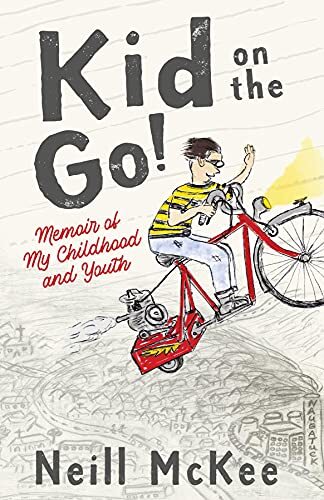
Purchase your copy now available on Amazon , Barnes and Noble , or Bookshop.org . Make sure to add it to your GoodReads reading list too .
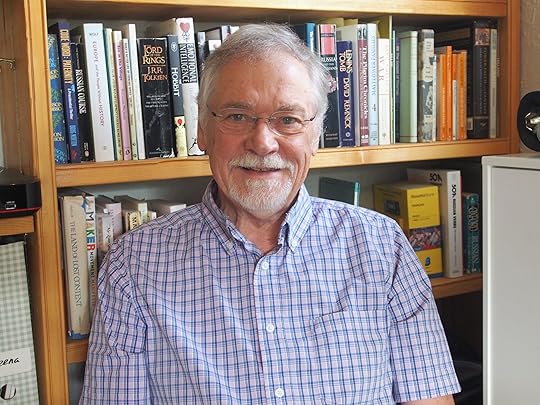 About the Author
About the AuthorNeill McKee is a creative nonfiction writer based in Albuquerque, New Mexico. He has written and published three books in this genre since 2015. His latest work is Kid on the Go! Memoir of My Childhood and Youth, a humorous and poignant account of his growing up in an industrially-polluted town in Ontario, Canada, and his university years. This memoir is a stand-alone prequel to his first travel memoir Finding Myself in Borneo: Sojourns in Sabah (2019) on his first overseas adventures in Sabah, Malaysia (North Borneo), where he served as a Canadian volunteer teacher and program administrator during 1968-70 and 1973-74. This book won the 2019 New Mexico/Arizona Book Award for Biography–(other than a New Mexico/Arizona subject) and a Bronze Medal in the 2020 Independent Publisher Book Awards (Ippy Awards).
In late 2020, McKee also released Guns and Gods in my Genes: A 15,000-mile North American search through four centuries of history, to the Mayflower—an entertaining account of how he searched for his roots in Canada and the US, in which he employs vivid descriptions, dialog, poetic prose, analytical opinion, photos and illustrations. In this work, McKee slowly uncovers his American grandmother’s lineage—ancestors who were involved in almost every major war on North American soil and others, including a passenger on the Mayflower, as well as heroes, villains, rascals, and ordinary godly folk. Through his search, McKee exposes myths and uncovers facts about the true founding of America.
McKee, who holds a B.A. Degree from the University of Calgary and a Masters in Communication from Florida State University, lived and worked in Asia, Africa, Russia and traveled to over 80 countries on assignments during his 45-year international career. He became an expert in communication and directed/produced a number of award-winning documentary films/videos, and wrote many articles and books in the field. McKee is now busy writing another travel memoir on his career. He does readings/book signings and presentations with or without photos. He prefers lively interactive sessions.
Follow the Author OnlineAuthor’s website . Kid on the Go! book page . Kid on the go! buy page . Author’s digital library . LinkedIn
You can find more about this author on other blogs that are hosting him.November 8th @ The Muffin: Join us as we celebrate the launch of Neill McKee’s newest memoir, Kid on the Go. Come by and read an interview with the author, find out more about his newest book, and enter to win a copy for yourself.
November 10th @ Quiet Fury Books: Visit Darcia’s blog today where she features an excerpt from Neill McKee’s memoir Kid on the Go!.
November 12th @ Choices: Visit Madeline’s blog and read Neill McKee’s guest post on surviving the 1960’s Rock n’ Roll culture.
November 15th @ Bring on Lemons: Visit Crystal’s blog today and read her insights into Neill McKee’s memoir Kid on the Go!.
November 15th @ Katherine Itacy’s Blog: Stop by Katherine and read her review of Neill McKee’s memoir Kid on the Go!. You can also enter to win a copy of the book for yourself too!
November 17th @ Beverley A. Baird’s Blog: Join Beverley as she features a guest post by author Neill McKee on issues on writing about your hometown.
November 20th @ Sweet Silly Sara: Visit Sara’s blog and read her review of Neill McKee’s memoir Kid on the Go!.
November 24th @ Beverley A. Baird’s Blog: Visit Beverley’s blog again and read her review of Neill McKee’s memoir Kid on the Go!.
November 26th @ StoreyBook Reviews: Visit Leslie’s blog where she shares an excerpt of Neill McKee’s memoir Kid on the Go!.
November 30th @ Author Anthony Avina’s Blog: Join Anthony as he interviews Neill McKee, author of the memoir Kid on the Go!.
December 2nd @ The Mommies Reviews: Visit Glenda’s blog today where she reviews Neill McKee’s memoir Kid on the Go!.
December 4th @ Mother Daughter Bookclub: Join Cindy today when she reviews Neill McKee’s memoir Kid on the Go!.
December 5th @ Fiona Ingram’s Blog: Join Fiona today when she shares Neill McKee’s guest post on writing a memoir in a youth’s voice but with present-day adult reflections.
December 7th @ CK Sorens’ Blog: Make sure to stop by CK Sorens’ blog today and check out a feature of Neill McKee’s memoir and enter to win a copy of the book too.
December 8th @ World of My Imagination :Join Nicole as she shares her thoughts about Neill McKee’s memoir Kid on the Go!. You’ll also have the chance to win a copy for yourself too.
December 10th @ Jill Sheets’ Blog: Join Jill as she interviews Neill McKee and features his memoir Kid on the Go!.
December 12th @ Author Anthony Avina’s Blog: Visit Anthony’s blog again as he shares his thoughts on Neill McKee’s newest memoir Kid on the Go!.
November 16, 2021
Learning While Writing

The advice I heard when I first started writing fiction, was this: “Write what you know.” Well, that didn’t work out very well, because I soon discovered that I just didn’t know enough.
So what to do?
I ventured into new territory and took some chances. I began writing what I knew absolutely nothing about, and guess what? I discovered I could learn all kinds of new things.
My first story was about cutting. When I first heard about young people who cut or self-abused in other ways, I was shocked. Then I wanted to know why. It was complicated, but self-abuse was a growing issue–still is. Since Sliding on the Edge was published, there are a lot of other young adult books that address it, and in my opinion, the more that’s written about this, the better.
With Double Negative, I had a chance to explore the issue of illiteracy. I discovered that 1 in 7 people in the United States can’t read. They can’t read a newspaper in print or online. They can’t read instructions on medication. I also discovered a lot of programs that are available for those who want to learn to read, so while that 1 in 7 statistic isn’t positive, the fact that there’s help out there is.
 Free for Review on NetGalley
Free for Review on NetGalleyWith Shattered, I stepped into a very large sea of uncertainty. I’d lived with people who were disabled, but I wasn’t disabled myself, so I had to do a lot of research in addition to drawing on the experience of those I knew very well and loved. What this book has taught me is probably more than any of the others. I’ve posted before about how people with disabilities are under-represented in books. Like any group, they deserve to have stories, and not stories that depict them as different, but stories that depict them as people.
So what do I want to learn about next? The story’s on my C-Drive, but it has a way to go because this topic is really a big challenge for me. It’s something I hate to read about and something that I dread happening. Unfortunately, it happens all too frequently. I’m still not sure I want to move forward with this project, but I’ve carried it around in my head for a while now, and based on previous experience, it probably won’t go away until I put the story out.
If you write, do you stick with what you know, or do you explore themes and topics you want to learn about?
Quote of the Week: The heart and soul of good writing is research; you should write not what you know but what you can find out about. Robert J. Sawyer, Hugo and Nebula Award-Winning Author
November 10, 2021
Adapt And Thrive or…
I have a strong conviction that we should all have a place at this table of life. One of the ways to help that be a reality is through reading. If we read about people who are different from us, there’s a chance we can come to understand them and appreciate them for who they are.
The other side of that coin is reading about people who are just like us, and through their stories, identify with their struggles and come to know we’re not alone after all. People who identify as “disabled” need those stories as much as any of us, and those stories should be as honest as possible.

My grandmother was one of the disabled people in my life, and I drew a lot on her experience while writing this book. I watched her lose her eyesight, fall into depression and despair because she couldn’t read or sew—her two favorite pastimes. Then slowly she rebuilt her life. In the end, she returned to the strong woman she’d always been, and she adapted to a different way of living. I think memories of her journey from sighted to blind might have contributed to the creation of Shattered.
 I’d so appreciate it if you’d read Shattered and maybe leave a review. It’s on NetGalley
I’d so appreciate it if you’d read Shattered and maybe leave a review. It’s on NetGalleyAlso available for purchase here:
Amazon . B&N . Kobo . Smashwords
I’m now at the housecleaning stage of my launch: Sending books to winners of signed paperbacks and eBooks. I’m doing blog tours, sleeping off the effects of publishing, and reading more books. I’m a greedy reader, so when writing and publishing take most of my time, I get a little cranky. I thought I’d share a few of my reads from my Goodreads Challenge of 40 books this year which I completed last month. I think I have to up my challenge next time around.
Quote of the Week: “I cannot change the direction of the wind, but I can adjust my sails to always reach my destination.” Jimmy Dean
November 2, 2021
It’s That Wednesday Again!
 Join Us Now
Join Us NowAre you ready?
Let’s rock the neurotic writing world!
This month’s optional question:
What’s harder to do, coming up with your book title or writing the blurb?
The awesome co-hosts for the November 3 posting of the IWSG are Kim Lajevardi, Victoria Marie Lees, Joylene Nowell Butler, Erika Beebe, and Lee Lowery!
The blurb by far. It has to be short and yet capture the crux of your story in an interesting or exciting way. That’s just not easy. I spend a lot of hours re-writing the blurb.
Titles can be tricky, but there’s usually one that comes pretty early in the writing, and I’ve only had to change my first choice once. Well, I didn’t change it; my publisher did.
CALL FOR A NEW ADMIN. If you’re an Instagram expert, IWSG could use your help. You can contact us via the IWSG email, or reach out to our Ninja Captain Alex. You can also leave me a comment and I’ll deliver your information.
My own news of the week is that my story’s now a book. If you’d like to read and perhaps review it, it’s up on NET GALLEY.and there’s still time to enter the Give Away. That’s at the end of this post.
When I set to write this latest story, I didn’t realize I’d be writing about an under-represented group in the world of books. When the truth finally hit me, I searched Goodreads and found only 519 books with handicapped heroes. Yet, one in four adults in the U.S. is identified as disabled. That’s 26% of the population. Since Shattered is a story about paraplegia, I wanted to know how many people had mobility disabilities in the U.S. I found that 13.7% do. On Goodreads, there are 84 books that tackle that topic. I’m not great at math, but “under-represented” seems to be the correct description here.
For years, we’ve heard the call for more diversity in books, and that is slowly happening. According to the Lee and Low Diversity Baseline Survey, books for young readers with characters of different ethnic and racial groups jumped by 31% from 1994 to 2018. In 2017 the Newbery Award went to Erin Entrada Kelly for her book, Hello Universe. It’s books like these that open up another’s world of experiences, give readers a chance to be a part of that world–one they’ve not experienced. It raises awareness and cultivates compassion and understanding. At the same time, it affirms the value of each of our community members and provides everyone an opportunity to find what is common to us all–our humanity.
Paraplegia cuts across all socio-economic, cultural, and ethnic lines. Anyone’s life can be suddenly altered like this by an accident, illness, a mistake in choices, or a congenital condition. And the theme of adapting to a different way of doing things can apply to all of us. This major change might not be as dramatic and sudden as the one I’ve depicted in Shattered, but we all experience the effects of aging, of illness, of economic or personal setbacks. Adapt or give up is often an option we are given, and in Shattered, that’s the option my main character is given.
My hope for this book is that following Libby Brown’s struggle to come to terms with losing her mobility and grappling with that option will inspire others–paraplegic or not.
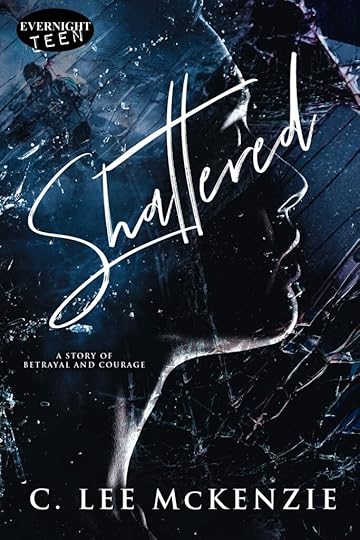 Available at Amazon. B&N . Kobo . Smashwords
Available at Amazon. B&N . Kobo . SmashwordsNineteen-year-old Libby Brown is on her way to the winter Olympics for her shot at the Gold. But on a last practice run, an out-of-bounds snowboarder collides with her, and she wakes up in a hospital unable to move her legs. Terrible accident they say, but was it? Or did someone want her off the U.S. slalom team? Libby must find the truth or remain shattered forever.
October 27, 2021
So You Want to Write a Ghost Story

It’s time for ghosts and rattling chains and cold, eerie nights. It’s certainly a time when I pull out my Poe collection and read until I’m sufficiently scared and can’t turn off the lights. Maybe this is when you might think, “I’ll write a ghost story!” If that idea has crossed your mind, here are a few pointers for where to start.
This category of fiction seems to be divided into two major camps: the really scary and the “cozy” ghost stories. Between these extremes, I’ve sampled ones that are what I call the scary, but not-so-much ones.
Most of us are familiar with Stephen King’s The Shining, and I haven’t found a book about ghosts that scares me more, so I’d rank that one at the top end of spine-tingling. At the other end of the spectrum, there are books like Tall Tails Secret Book Club: The Secret Library Cozy Mysteries by CeeCee James or A Scandal in Boohemia by Gwen Gardner. These are slightly spooky and fun.
The first decision ghost story writers have to make is which type they want to craft. If they’re headed toward the Stephen King side of things, the ghostly presence can be of the paranormal ilk, seen or unseen (the scariest choice), it’s malignant and fear-inducing—the cause of the unexplained events. On the other hand, if it’s a story that warms your heart instead of chilling your bones, the ghost(s) become characters with names, a history, physical characteristics, and personalities.
Even with a lightly and spooky tale, I like to think about what scares me most when I set out to write a ghostly tale. For me, that’s when I’m alone in a dark space, especially when there’s something I can sense, but not see. I’m working on a story now and the first encounter I have with the not-so-scary ghost is in a darkened room. The protagonist–Calista–has just gotten some shocking news and has gone to bed, troubled and asking herself how she’s going to deal with it. Enter ghost–Mrs. Wilhelm:
“It won’t be that difficult, dear.” The woman’s voice was sweet. It came to Calista like a flickering of tiny lights in her heart, not in her ears.
Calista bolted upright, her skin needled by the shock of hearing it. With a shaking hand, she lit the candle again and held it overhead, but the room was as it had been, empty except for her wardrobe, writing table, and chair. “Who…”
“I’m Mrs. Wilhelm, the third from the left, near the gate.”
That made no sense at all.
“You’re a sweet girl. Now I have a chance to tell you so.”
“I have no idea what you’re talking about.” Calista set down her candle and stooped to look under her bed.
“You won’t find me there.” The voice was sprinkled with laughter.
“Then where?”
“I told you already, but where I am isn’t important anymore.” The woman’s sigh brushed along Calista’s mind.

It’s also important to build the ghost as the book moves forward. The whispered words in the first scene introduce the ghost, but the next time there will have to be something more concrete. Here’s the next ghostly encounter in my example. We’ve moved to the cemetery:
The cold increased and numbed Calista’s fingertips. She regretted rushing from the cottage without her heavy shawl, but before the cemetery, the morning hadn’t been as nippy. She wrapped her arms around her middle.
Mrs. Wilhelm called one name, and when a spirit curled up from the grave just in front of where Calista huddled, she fell back trembling. She no longer felt the chill, only panic. She considered running, but Mrs. Wilhelm shook her head. “You have nothing to fear from the dead. You are quite safe here.”
Be sure to note the details about your ghost: when or if it appears, how it enters and leaves, the way it looks or how the character(s) react to it. Is there anything that signals the ghost’s arrival? Can your ghost move things? Does it float or walk? Pass through walls, open doors? Is there a specific time the ghost arrives or can it come at all hours? How did it die? When did it die?
And then the setting. Here’s where you can explore all kinds of possibilities. Does everything happen on a wind-swept moor or in a New York townhouse? Is the ghost tied to a place or does it follow the fleeing person it haunts?
It’s always good to read some examples and get the feeling for what’s been done before, but then become creative. Just because there are traditions, doesn’t mean you can’t find something fresh for your story.

If you want to do some ghostly reading, here are two links to help you choose between Fright Night and Titillating Fun by the Fire Night .
Link for scary ghost stories–Don’t read these alone…at night…did I make it clear…don’t read them alone?
Link for cozy ghost stories–Make some cocoa. Grab a blankie. Cuddle up and enjoy.
I’m sure there are some writers here who might like to chime in with more suggestions about crafting a good ghost story, so check the comments.
 BIG NEWS for me at least… Shattered will be published on October 29th. It’s on my Goodreads Book page and if you’d mark it as one TBR, I would really appreciate it! You can download it on Net Galley, but if you’d pre-order it…well what’s there to say?
BIG NEWS for me at least… Shattered will be published on October 29th. It’s on my Goodreads Book page and if you’d mark it as one TBR, I would really appreciate it! You can download it on Net Galley, but if you’d pre-order it…well what’s there to say?
October 20, 2021
The Ghostly Month Is Here!
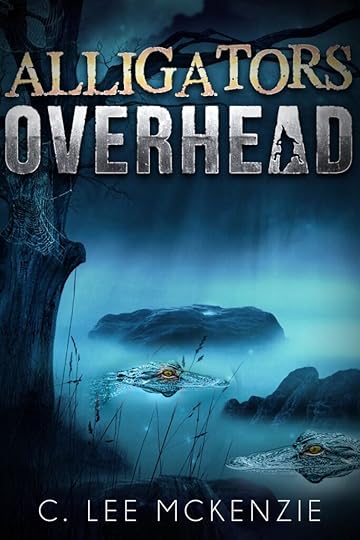 KINDLE COUNTDOWN!
KINDLE COUNTDOWN!10/21-10/23 only .99 on
AMAZON
I’ve been so wound up about seeing Shattered into the world that I almost forgot my favorite holiday was fast approaching. This is the month when pumpkins rule and ghost stories are at their best. I’m a kid again when October arrives, and I have to control myself when I’m near a costume shop or a candy counter. I’ve been known to buy a lot of each this time of year.
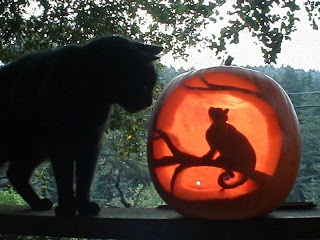 Our Jack-O-Lantern Inspector
Our Jack-O-Lantern InspectorThis picture was taken several years ago, and I still love pulling it out in October and remembering the story behind it. My husband had just carved this Jack-O-Lantern and placed it on the deck railing. I was about to snap a picture of his clever work, when our holiday-appropriate cat (Champ had a beautiful sleek black coat) jumped up to take a close look. I captured this moment quite by accident, and I’ve always treasured it.
I think I love this holiday because it’s one without any expectations. You can have a party, but you don’t have to. You can wear some crazy garb, or you can just enjoy the others. A lot of small, friendly visitors knock at your door after dark, and if you’re energetic you can whip up some Halloween treats and test them to be sure they’re going to be tasty.
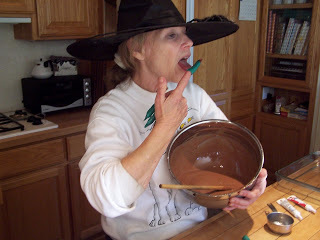 Author While Not Writing
Author While Not Writing
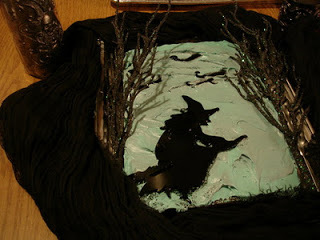 Chocolate Witch Cake
Chocolate Witch Cake
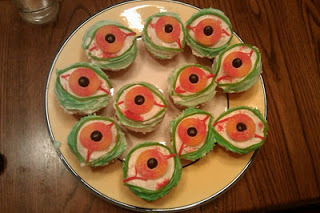 Eyeballs Anyone?
Eyeballs Anyone?So yes, I’m a Halloween devotee. And I’m sure that’s why I wrote Alligators Overhead and the other two books in the Pete and Weasel series. I loved conjuring up haunted mansions and ghosts. I enjoyed giving myself the creeps while prowling the swamp. I relished leaving behind the real world of taxes, political upheaval, and the daily grind of “what’s for dinner” in exchange for weaving the impossible into a story that–for a while–took me into it.
I’m stacking a little bit of promo this month for Alligators Overhead to celebrate this holiday. The .99 offer is a part of that, and I’ll keep that price until 10/23 12 AM. Then because I’ll need to replenish my Trick or Treat candy supplies, the price will go to $2.99 until 10/27 12 AM. After that, I’m raking in the big bucks. It’ll be $4.99 to find out what Pete and Weasel are up to.
If you’ve read to the bitter end of this post, congratulations on your endurance, and thank you. It’s a bit of a ramble, but I needed a break from writing ad copy. Be well. Be kind to yourself and those you meet. And don’t over-indulge in chocolate like this writer is bound to do.
Oh…and here’s a shameless plea for help. I’ve added Shattered to my Goodreads Books. I’d love it if you’d mark it as one of your TBR books!October 12, 2021
Two New Books!
I’m so pleased to have H.R. Sinclair and Tyrean Martinson here today to show off their new books. Take it away, H.R. and Tyrean.
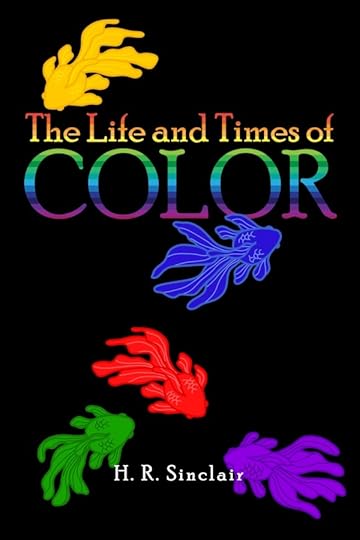 For people who love color, its history, symbolism, and superstitions. There’s information on color from around the world, a color thesaurus, and color descriptors as well as places and things that are predominantly one color. Plus the effects of color, trademarked colors, historical dyes, phrases, and information about your color mood.
For people who love color, its history, symbolism, and superstitions. There’s information on color from around the world, a color thesaurus, and color descriptors as well as places and things that are predominantly one color. Plus the effects of color, trademarked colors, historical dyes, phrases, and information about your color mood.BUY NOW
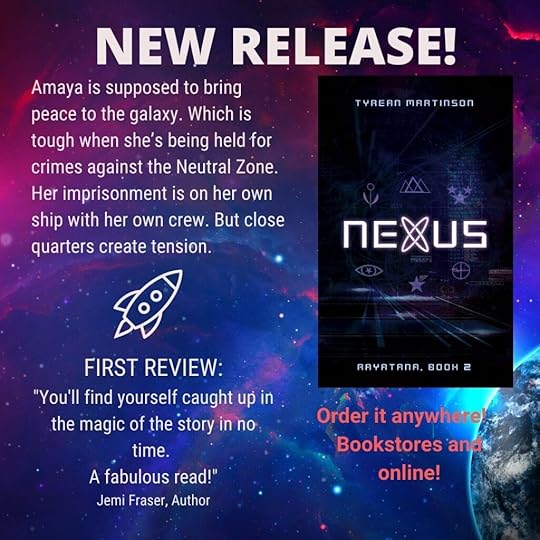 BUY NOW
BUY NOWAmaya is supposed to bring peace to the galaxy. Which is tough when she’s being held for crimes against the Neutral Zone. Her imprisonment is on her own ship with her own crew. But close quarters create tension.
Honestly, her role as Rayatana is a mess.
She may never get to use her powers for anything good. Not if her teacher continues to keep secrets, and not if her powers keep harming others. Putting her mother in a coma should put her in prison, but she has a mission. She wants to bring peace to her people. She needs to become the Rayatana.
ABOUT THE AUTHOR: Tyrean Martinson is a word hunter. She forages for words both sweet and tart in the South Sound of Washington State. An eclectic writer, she writes speculative fiction, contemporary and historical fiction, short scripts, devotions, writing books, song lyrics, and poetry.
YOU CAN BUY NEXUS NOW
Amazon US. Amazon UK. Amazon AUS . Amazon Canada . Smashwords . Apple . Kobo . Goodreads . Bookbub
October 6, 2021
Two Firsts on One Day!
We all know this is the first #IWSG Wednesday and now this is the first time I’m going to show off the cover of my new book, Shattered: A Story of Betrayal and Courage. I’m giggling, so it’s good there’s no audio accompanying this post.
 Coming Soon!
Coming Soon!I fell in love with this artwork. If you notice in the upper left, there’s a hidden image and it’s just subtle enough to be foreboding, but not eerie. Something’s going to happen in this book, and it has to do with that image and the girl in profile.
Since I’m fascinated with book covers, I’ve read some articles about what makes a good book cover. Here’s a quick list of what I found.
A book cover should
grab people’s interest on a first lookmake people curiousrelay information about the book so that potential readers will open it and see what’s inside focus on one main idea and not put in every little detailappeal to the readers the book’s intended forbe unique AND OF COURSEencourage potential readers to buy the bookI think this one meets the criteria, but I’m really close to this project, so give me your opinion.
And now for the monthly #IWSG post Join Us Now
Join Us NowOctober 6 question – In your writing, where do you draw the line, with either topics or language?
The awesome co-hosts for the October 6 posting of the IWSG are Jemima Pitt, J Lenni Dorner, Cathrina Constantine, Ronel Janse van Vuuren, and Mary Aalgaard!
This is an interesting question, and I think it’s a tricky one to answer. My first thought when I read it was “I won’t write about anything that I’d be ashamed to put my name on.” But maybe that’s too vague. That doesn’t mean I’d avoid edgy topics–in fact, I’ve done the opposite; it just means that if I do tackle a topic that’s controversial or taboo, it has to be for a very good reason–perhaps to open that topic for discussion and expose it for what it is. Sometimes exploring the darker side of things in our world can help to weaken or even eliminate it.
Since I write a lot for teens, I’ve chosen to write about things that they’re experiencing and having to deal with: loss of a parent, abuse, cutting, injustice, homophobia. If they see a character navigating these treacherous waters, perhaps they’ll recognize that others are going through similar difficulties, and that will give them hope of managing to do so as well.
As to language, anything that legitimately tells a story so that it sticks with the reader is okay with me; however, that definitely doesn’t mean I’m up for gratuitous swearing. That turns me off in any storytelling medium. Again, because of the category of fiction that I write, I choose to stick with cleaner language and find better ways to develop “skanky” characters. Their behavior is often the most vivid way to show the reader their true nature.
I’ve answered this question on the IWSG Blog Post today, but with a different angle. Hope you’ll stop by and check it out. This question should produce some interesting answers for October, so visit the blogs and read what our members think.
Quote of the Month: “Some people say, ‘Do not judge the book by its cover!’ People can say anything they want to say, but for me, the cover does matter.”
― Toba Beta, syfy writer from Indonesia
September 29, 2021
Life Just Before Publication
For about a year I live with this new book banging around in my head. Then the next year I cough it up onto my C Drive, research, research, research–write, write, write. If you write anything and want it polished, the next step is that phase we lovingly call editing. So some weeks go into that.
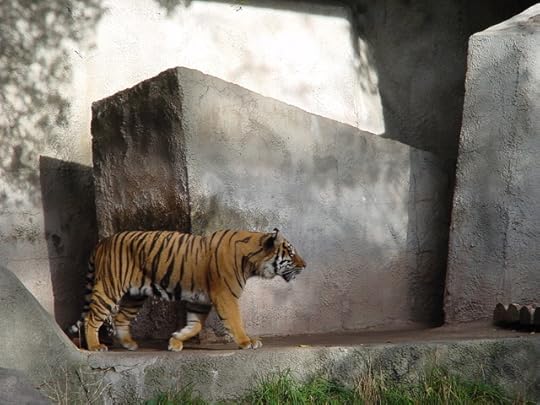
The big leap is submitting it. That’s usually a few weeks of pacing like a tiger in a zoo and a lot of monologues.
“Will they take it? Of course, they will. But what if they hate it?”
“Why don’t I hear? I should have heard by now. The book’s not good. I should have written something else.”
There are a lot more of these, but you might already be familiar with them if you’ve gone through this process.
Then the email comes and it’s a “Yes.”
I sign the contract. They set the publication date and viola! But that’s not the end, is it? No. Now just before publication, I have all that scheduling to do, all that shouting about this newest addition to my list.
So here I am in the final weeks just before publication. I can tick off several jobs as done, but I still gasp at what’s left.
My first Giveaway is complete thanks to those of you who were here every week in August for my Character Reveal. Thank you again for sticking it out a whole month. September, I set up a series of posts that tell more about the background for this book, finally, I could reveal the title was Shattered: A Story of Betrayal and Courage. I wanted to be sure the publisher didn’t change it. I’ve had that happen before.
The cover art comes next, but before it arrives…You guessed it. More pacing. Will it be something I love? What if I hate it? When will it come?
I still don’t have the specific pub date, so I have to guess a bit about when to do certain promotional bits. But I’m very practiced in tiger-pacing, that’s what I’ll do until I know about these final details and all of the scheduling is in place.
If you write for publication, do you relate to any of this? What do you do just before publication?
Next Week….The Cover! (I hope)


